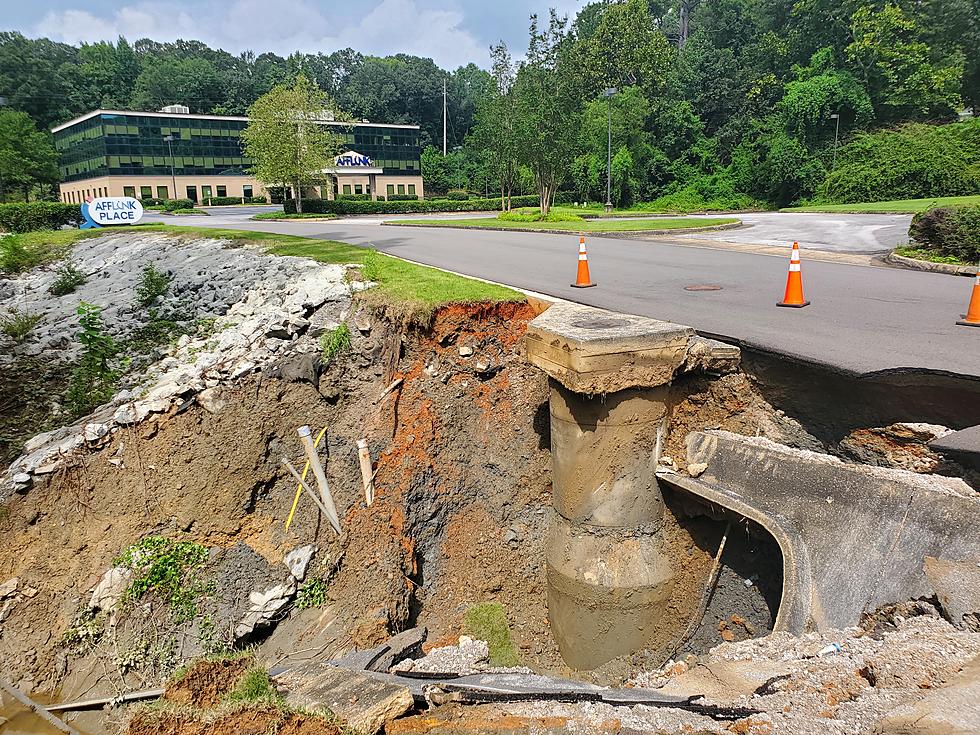
LOOK: Sinkholes Develop in North Tuscaloosa After Saturday’s Historic Rainfall
Sinkholes have developed in parts of North Tuscaloosa after hours of heavy rain Saturday, leading to at least one minor road closure.
Two separate sinkholes were visible Sunday afternoon along AFFLINK Place off Rice Mine Road.
One seemingly minor sinkhole swallowed most of a parking space directly off AFFLINK Road between Wells Fargo bank and Express Oil Change & Tire Engineers.

A second, larger sinkhole developed further up the road closer to the AFFLINK building. It was significantly deeper and washed out part of the street.
Signs and cones blocked the road to through traffic Saturday afternoon.
On the other side of the Black Warrior, conditions were significantly improved Sunday, but Tuscaloosa Mayor Walt Maddox said parts of the city saw historic, 1,000-year flooding Saturday.
Four of the city's five rain gauges recorded between 1 and 2 inches of rainfall Saturday afternoon, but their reader on Kauloosa Avenue saw more than 5 inches of rain between 12:15 p.m. and 2 p.m.
4.45 inches of rain fell in a single hour, Maddox said, which a hydrologist called a 1,000-year rain event -- something that should only be seen once every 1,000 years.
The extreme localization of the heaviest rainfall meant the worst of the city's problems were all reported in a relatively small area on and around the University of Alabama Campus and around 15th Street.
A Tuscaloosa Police spokesperson said multiple motorists had to be rescued after their vehicles were disabled when they attempted to pass through floodwaters.
The flooding also tragically claimed the life of a man whose SUV was swept off Greensboro Avenue just after 2 p.m. Saturday.
The victim's body was recovered Sunday morning, and he has since been identified as 40-year-old Kelvin Watford.
According to the National Weather Service, the city has recorded 58.15 inches of rainfall so far in 2021 -- almost 19 inches more than average for this time of year.
LOOK: The most expensive weather and climate disasters in recent decades
Top Stories From The Tuscaloosa Thread (9/06-9/10)
More From Tuscaloosa Thread









